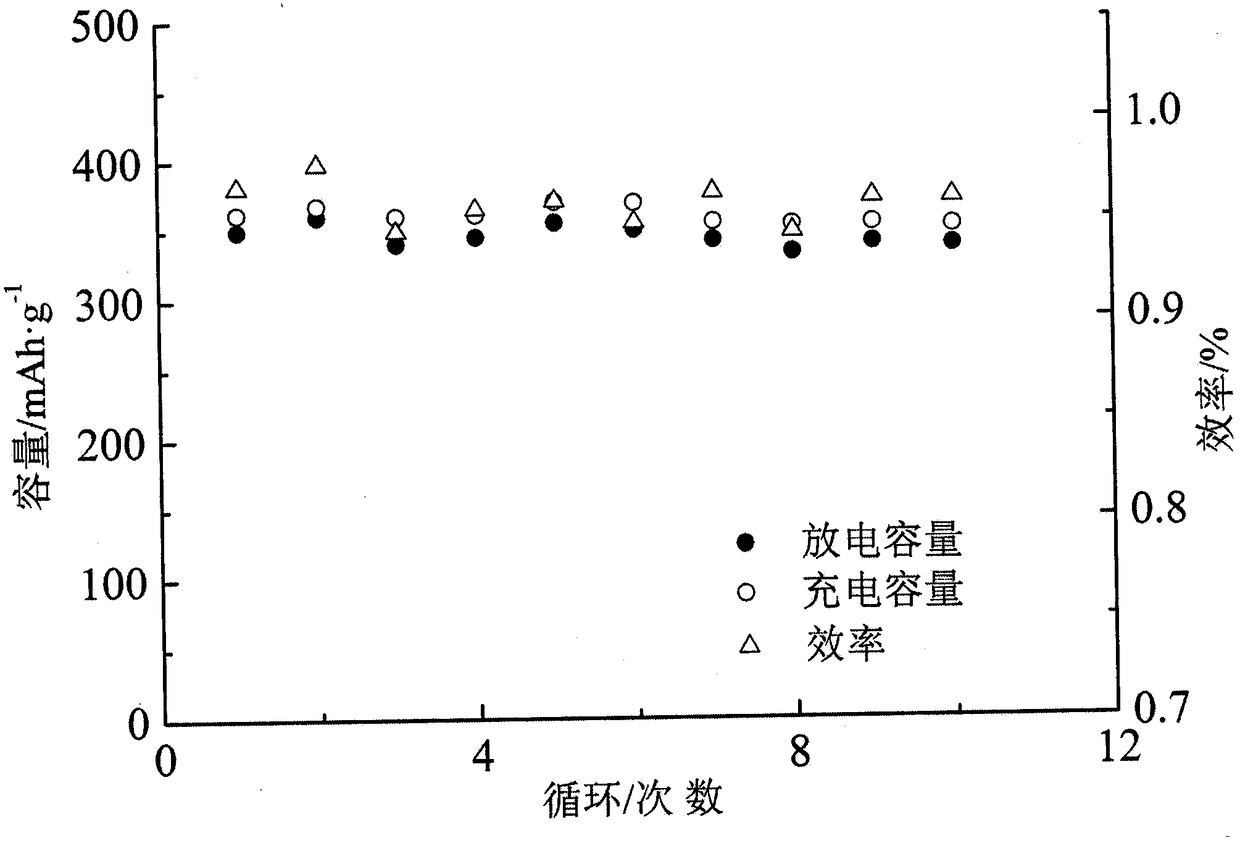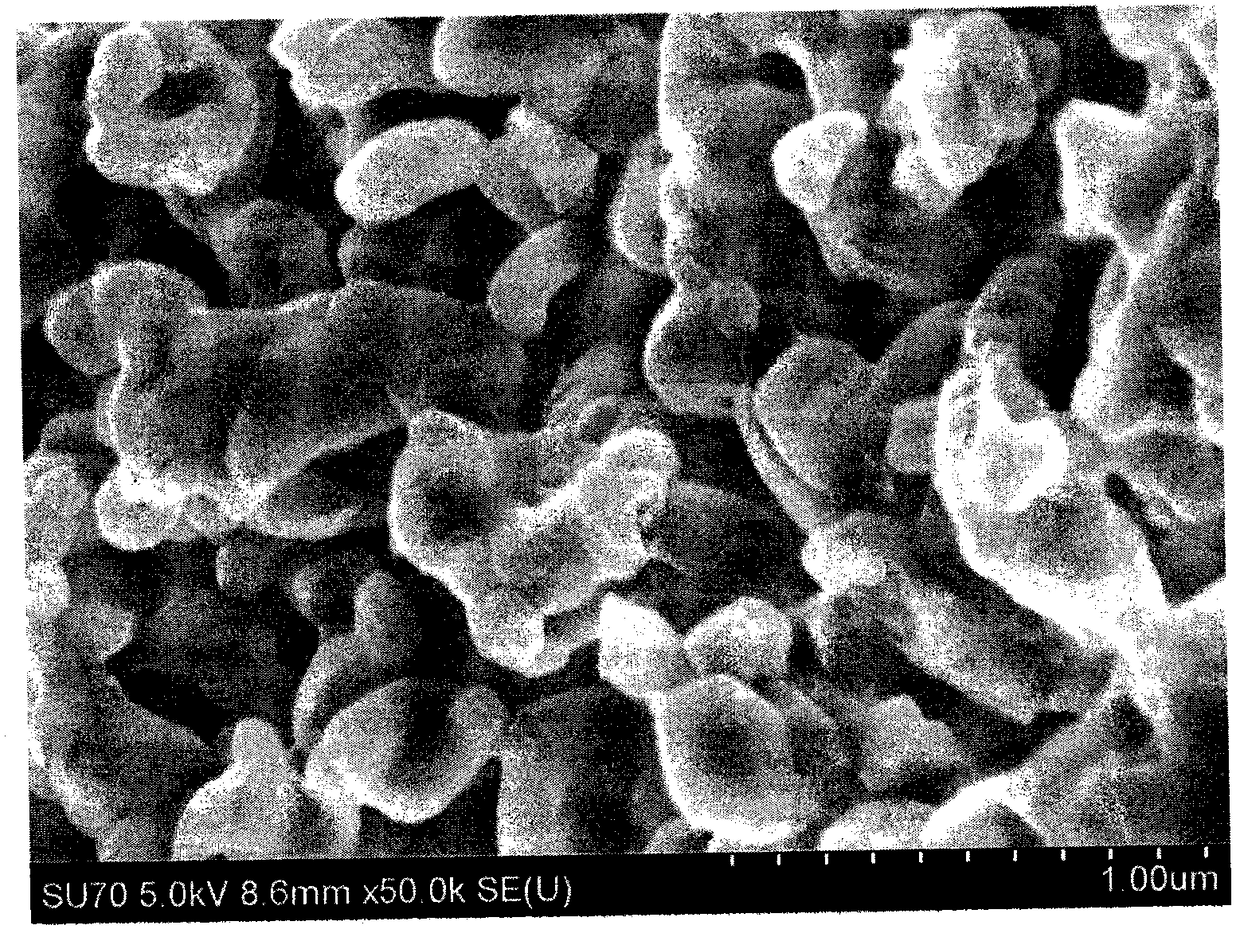A template synthesis perovskite oxide mgtao3 magnesium ion battery negative electrode material and preparation method thereof
A perovskite oxide and magnesium ion battery technology, which is applied in battery electrodes, chemical instruments and methods, tantalum compounds, etc., can solve problems such as shortening the diffusion time of magnesium ions, material lattice transformation, and difficulties in particle electronic conduction, and achieves The effect of reducing electron migration resistance, reducing grain boundary resistance, and increasing contact area
- Summary
- Abstract
- Description
- Claims
- Application Information
AI Technical Summary
Problems solved by technology
Method used
Image
Examples
Embodiment 1
[0022] Embodiment 1: Magnesium nitrate hexahydrate, tantalum hydroxide are mixed in the ratio of 1: 1 by the amount of substance, the amount of adding substance is the citric acid of 5 times of the amount of total metal ion substance and add water and stir to form total metal ion concentration of 1.0mol·L-1 initial aqueous solution; mix 6g of acrylamide / 100mL of water with acrylamide and 1g of N,N'-methylenebisacrylamide / 100mL of water with water Dissolved, the amount of acrylamide in the solution is 0.5 times the amount of total metal ion substances in the initial aqueous solution; use a polytetrafluoroethylene stirring paddle to stir at a speed of 1500rpm for 5 minutes and then raise it to 5°C / min. 75°C and maintain this temperature until a jelly-like gel forms. Dry the formed gel in a low-temperature and high-vacuum environment. The drying process adopts the finished freeze dryer on the market. Put the gel into the sample tray of the freeze dryer and start the refrigerator. ...
Embodiment 2
[0023] Embodiment 2: Magnesium nitrate hexahydrate and tantalum hydroxide are mixed according to the ratio of 1: 1 of the amount of substance, and the amount of substance added is citric acid 7 times of the amount of total metal ion substance and added with water and stirred evenly to form a total metal ion concentration of 2.0mol·L-1 initial aqueous solution; mix 6g of acrylamide / 100mL of water with acrylamide and 1g of N,N'-methylenebisacrylamide / 100mL of water with water Dissolved, the amount of acrylamide in the solution is 0.8 times the amount of total metal ion substances in the initial aqueous solution; use a polytetrafluoroethylene stirring paddle to stir at a speed of 1800rpm for 10 minutes and then raise it to 7°C / min. 80°C and maintain this temperature until it becomes a jelly-like gel. Dry the formed gel in a low-temperature and high-vacuum environment. The drying process adopts the finished freeze dryer on the market. Put the gel into the sample tray of the freeze...
Embodiment 3
[0024] Embodiment 3: Magnesium nitrate hexahydrate and tantalum hydroxide are mixed according to the ratio of 1: 1 of the amount of substance, and the amount of substance added is citric acid 10 times of the amount of total metal ion substance and added with water and stirred evenly to form a total metal ion concentration of 2.5mol·L-1 initial aqueous solution; mix 6g of acrylamide / 100mL of water with acrylamide and 1g of N,N'-methylenebisacrylamide / 100mL of water with water Dissolved, the amount of acrylamide in the solution is 1.2 times the amount of total metal ion substances in the initial aqueous solution; use a polytetrafluoroethylene stirring paddle to stir at a speed of 2000rpm for 15 minutes and then raise it to 10°C / min. 85°C and maintain this temperature until a jelly-like gel forms. Dry the formed gel in a low-temperature and high-vacuum environment. The drying process adopts the finished freeze dryer on the market. Put the gel into the sample tray of the freeze dr...
PUM
 Login to View More
Login to View More Abstract
Description
Claims
Application Information
 Login to View More
Login to View More - R&D
- Intellectual Property
- Life Sciences
- Materials
- Tech Scout
- Unparalleled Data Quality
- Higher Quality Content
- 60% Fewer Hallucinations
Browse by: Latest US Patents, China's latest patents, Technical Efficacy Thesaurus, Application Domain, Technology Topic, Popular Technical Reports.
© 2025 PatSnap. All rights reserved.Legal|Privacy policy|Modern Slavery Act Transparency Statement|Sitemap|About US| Contact US: help@patsnap.com


